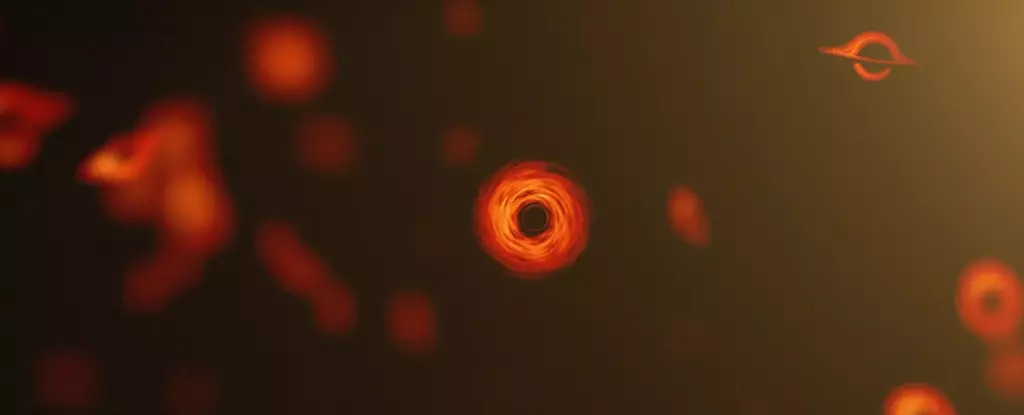Small Primordial Black Holes (PBHs) represent a captivating area of study in contemporary astronomy and cosmology. The theoretical framework suggests that these black holes emerged in the aftermath of the Big Bang. Formed from incredibly dense regions of subatomic matter, PBHs could potentially collapse under their own gravitational forces, leading to phenomena that may help explain dark matter and primordial gravitational waves. Nevertheless, despite their intriguing theoretical background, definitive observational evidence for PBHs has yet to materialize, prompting scientists to explore inventive strategies for their detection.
The possibility that PBHs may account for a significant portion of dark matter makes them a focal point in the quest to understand the universe. Dark matter remains one of the most challenging enigmas in cosmology, with implications that reach far beyond mere existence. As researchers work to shed light on this elusive component of the universe, the potential of PBHs to bridge gaps in knowledge becomes increasingly enticing. Their study could not only pave the way for understanding dark matter but also provide answers to an array of unresolved issues in physics.
Recent research has taken a novel approach to the detection of PBHs, with scientists proposing that these miniature behemoths may be hiding within objects found across our Solar System, such as planets, moons, and asteroids. A pivotal study by physicists De-Chang Dai and Dejan Stojkovic explored the dynamics of PBHs within these astrophysical bodies. The researchers theorized that if a PBH were to reside within a planet or asteroid with a liquid core, it could consume that core over time, resulting in a hollow structure that remains intact if the surrounding crust is sufficiently robust.
This intriguing property introduces a new dimension to PBH research, enabling astronomers to identify potential candidates in our Solar System by measuring their mass and radius to estimate density. The implications of this method are profound, suggesting that structure within celestial bodies might reveal traces of these primordial objects.
Microtunnels: A Window into PBH Existence
One of the most groundbreaking concepts emerging from this research involves the detection of microtunnels left in materials when PBHs pass through them. According to the findings of Dai and Stojkovic, if a small PBH traverses a solid medium, it would create a tunnel comparable in radius to its own size. This would facilitate the development of sensors capable of identifying such tunnels in various materials, including glass, rocks, and metals. Such an approach presents an innovative method to discern the presence of PBHs without the need for more complex observational tools typically utilized in traditional astrophysics.
The researchers suggest that large, polished metal slabs could be strategically employed to detect PBHs, drawing a parallel between this method and the existing techniques used in neutrino detection. Isolating these slabs could allow researchers to capture any sudden changes in properties, providing insight into the elusive nature of PBHs.
The current research landscape surrounding PBHs is invigorated by a resurgence of interest, harkening back to 1966 when the existence of these entities was first theorized by Russian scientists Igor D. Novikov and Yakov Zeldovich. The work of Stephen Hawking further popularized PBHs, particularly following his groundbreaking 1974 discovery that black holes could emit radiation, leading to their eventual evaporation.
While larger black holes might take epochs to evaporate, smaller PBHs present an intriguing counter-narrative, as many could have already undergone this process or be well on their way. The cross-disciplinary nature of studies related to PBHs has led scientists to explore connections between primordial black holes and other cosmic phenomena, including gamma-ray emissions within the Milky Way’s dark matter halo.
The Future of PBH Research
The quest to comprehend primordial black holes stands at a critical juncture. The methodologies being proposed could potentially yield groundbreaking discoveries that reshape our understanding of the universe. While the possibility remains that these efforts may lead to null results due to the expected low flux of PBHs, the potential implications of confirming their existence are profound. As research continues and detection technologies evolve, the enigmatic nature of PBHs may finally unravel, offering insights into dark matter and the fundamental structure of our universe.
The exploration of PBHs not only honors the legacy of pioneering physicists like Novikov, Zeldovich, and Hawking but also paves the way for future breakthroughs, ensuring that this field remains a vibrant and exciting avenue for scientific inquiry.


Leave a Reply